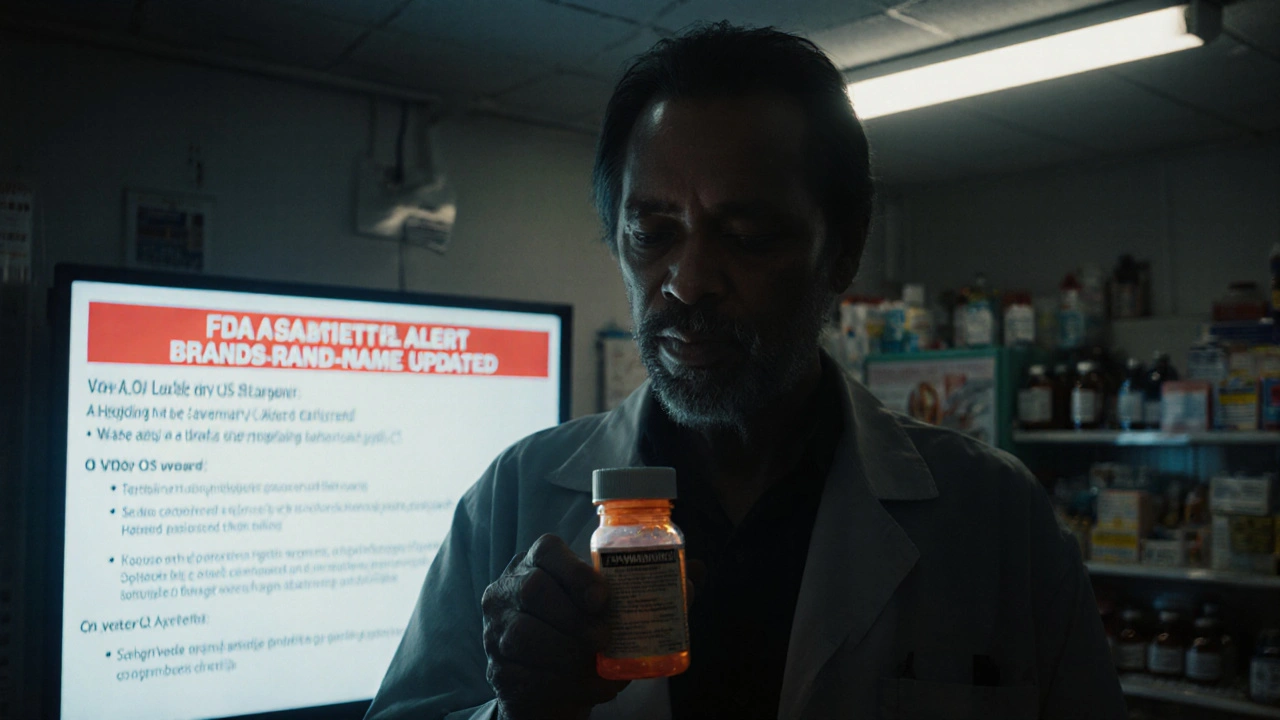Drug Labeling Changes: What You Need to Know About Updates, Risks, and Safety Alerts
When a drug’s label changes, it’s not just paperwork—it’s a signal that something important has shifted. Drug labeling changes, official updates to the information printed on medication packaging and inserts. These updates are required by the FDA when new safety data, side effects, or usage guidelines emerge. They’re not minor tweaks. They can mean a drug now carries a black box warning, a dosage limit is lowered, or a warning about dangerous interactions is added. These changes directly impact how you take your medicine—and what your doctor needs to know. You might not see the change on your bottle right away, but that doesn’t mean it didn’t happen. The FDA doesn’t wait for a drug to cause mass harm before acting. They act when evidence shows a pattern: a rare but deadly side effect, a hidden interaction with a common supplement, or a manufacturing flaw that affects how the drug works in your body.
These updates often follow real-world events. Look at the nitrosamine contamination recalls—over 500 drugs pulled because impurities in generic pills raised cancer risk. That wasn’t a guess. It was data from lab tests and patient reports that forced label changes across entire drug classes. Or consider therapeutic failures with generics: when a patient’s blood pressure or seizure control suddenly worsens after switching to a cheaper version, regulators dig in. If the generic doesn’t absorb the same way, the label gets updated to warn doctors and pharmacists. Even something as simple as a new warning about alcohol use with a painkiller can come from dozens of ER visits tied to the same combo.
These changes don’t just affect prescriptions. Over-the-counter meds like antihistamines get label updates too—dosage limits adjusted, warnings added about driving or mixing with other meds. And when a drug like St. John’s Wort is found to dangerously interact with SSRIs, the label on both the herbal product and the prescription gets rewritten. You might think you’re safe because you’ve been taking the same pills for years. But if the label changed last year and you never checked, you could be at risk without knowing it.
That’s why tracking drug labeling changes isn’t optional—it’s part of managing your health. These updates are how the system tries to catch problems before they hurt more people. They’re how we learn that a once-safe drug can trigger aplastic anemia, or that a common antibiotic can set off a deadly gut infection. The posts below dive into real cases: how nitrosamines slipped through, why generics sometimes fail, how opioid itching isn’t what you think, and what to do when your medication’s label suddenly looks different. You’ll find practical advice on spotting changes, asking the right questions, and protecting yourself when the system updates behind the scenes.
FDA Safety Alerts: Understanding Communications About Generic Drug Problems
FDA safety alerts for generic drugs often lag behind brand-name versions due to outdated labeling rules. Learn how generics are monitored, why warnings may be delayed, and what patients can do to stay safe.
About
Medications
Latest Posts


Dapagliflozin: FAQ, Guide, and Expert Answers for Diabetes and Heart Health
By Orion Kingsworth May 9, 2025

Buy Cheap Generic Effexor Online - Safe Guide & Top Pharmacy Picks
By Orion Kingsworth Oct 5, 2025

Understanding Priligy Tablets for Premature Ejaculation Treatment: A Comprehensive Drug Guide
By Orion Kingsworth Mar 22, 2024

